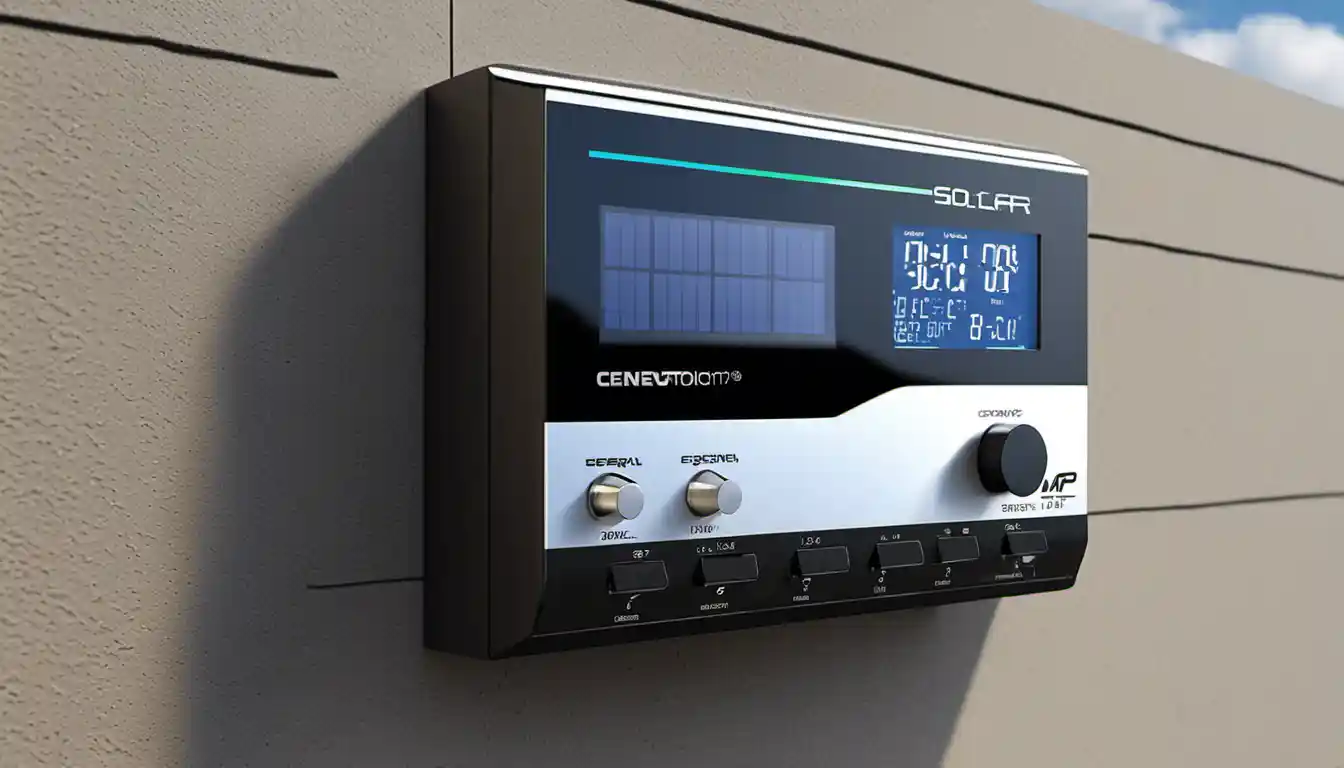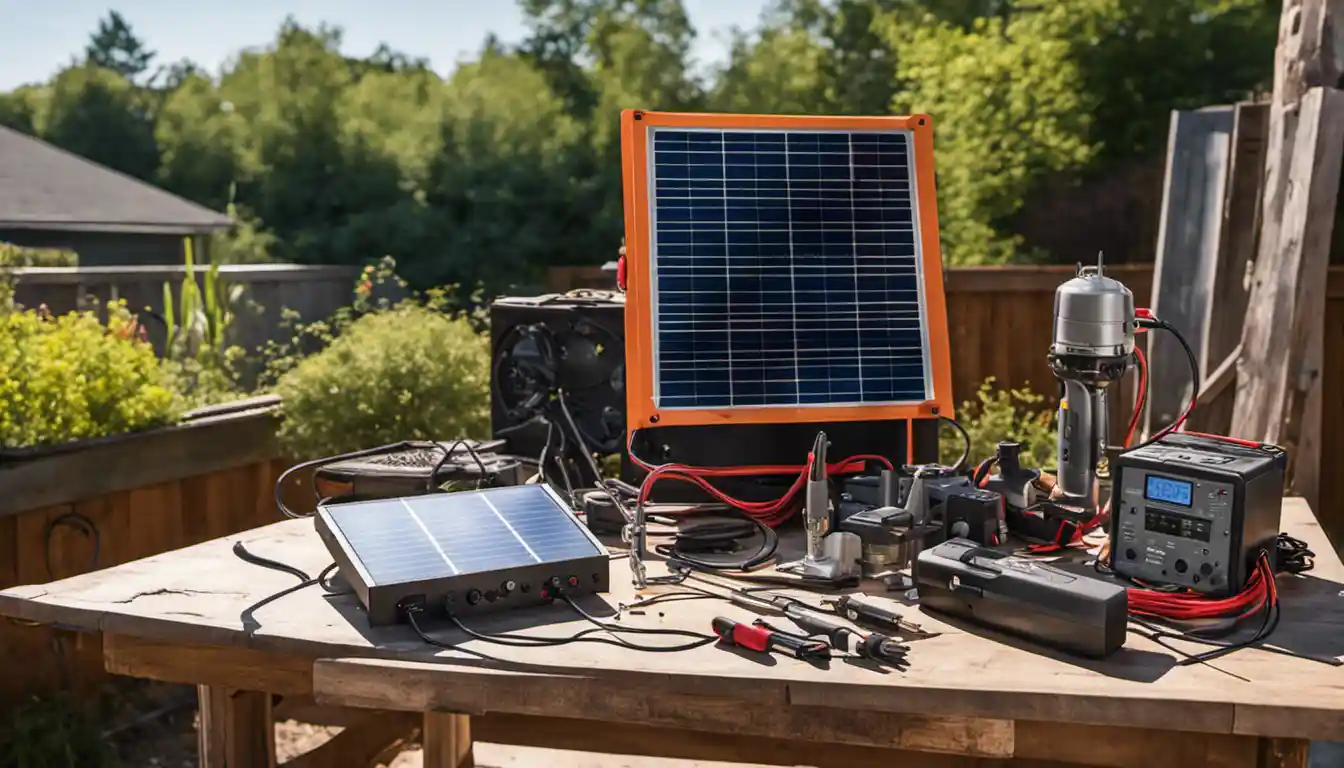Basics of Solar Panels
To charge a battery with a solar panel, you need to connect the solar panel to a solar charge controller, which regulates the voltage and current coming from your solar panels. Then, connect the charge controller to your battery. Ensure your solar panel is in a sunny location to effectively capture solar energy which will be converted into electrical energy to charge your battery.
What are Solar Panels?
Solar panels are remarkable energy-generating devices that convert sunlight into electricity through a process called photovoltaics. These panels are typically made up of many solar cells, which work together to convert light energy into usable electrical power.
See also: How To Charge Your Battery Bank Without Your Solar Array
The Types of Solar Panels
Major types of solar panels include monocrystalline, polycrystalline, and thin-film. Monocrystalline and polycrystalline solar panels are the most commonly used due to their efficiency and stability. Thin-film solar panels, on the other hand, are lighter and more flexible making them suitable for portable power solutions.
See also: Charge A Laptop With a Solar Panel (Here’s How)
Understanding Batteries for Solar Panels
See also: Solar Panel Charging Calculations of a Battery (Calculated)
What Are The Batteries for Solar Panels?
The batteries for solar panels, often known as solar batteries, are rechargeable batteries that store the energy produced by the solar panels. They provide power when the panels are not producing electricity, such as during the night or on overcast days. The most commonly used are lead-acid and lithium-ion batteries, although the latter is rapidly becoming a favorite due to its longer lifespan and efficiency.
See also: 12v Solar Charger on a 6v Battery (Avoid Damage!)
Introduction to Simple Solar Panel Wiring

See also: Will A Solar Panel Charge A Dead Battery? (Must-Know)
A Simple Solar Panel Wiring Circuit
A solar panel wiring circuit is relatively simple. Solar panels are connected to a charge controller, which is then connected to the battery. The charge controller ensures the solar panels do not overcharge the battery, and the battery stores the converted energy for later use.
See also: Solar Panels Overcharging A Battery (Batteries Full)
12V Off-Grid Solar Wiring Diagram
A 12V off-grid solar wiring system might look complex, but it’s actually straightforward. It involves a solar panel, connected to a charge controller, which is in turn connected to a 12V battery. The battery is then connected to an inverter which changes the DC current from the battery to AC for use in your home appliances.
See also: Charge A 6 Volt Battery with a Solar Panel (Here’s How)
Direct Charging from Solar Panels
See also: How to Check if Solar Panel is Charging Battery: A Complete Guide for Solar Energy Users
Can I Directly Charge Battery from Solar Panel?
You might be wondering, “Can I directly charge battery from the solar panel?” The short answer is yes, you could. However, in order to protect your battery from being overcharged or undercharged it is highly recommended to use a charge controller. This extends the life of your battery and ensures a more efficient system.
See also: How Long Does It Take to Charge a Solar Battery? A Comprehensive Guide
Steps to Charge a Battery with Solar Panels
Purchasing a Charge Controller

There are two main types of solar charge controllers: PWM (Pulse Width Modulation) and MPPT (Maximum Power Point Tracking). More commonly used is the MPPT type due to their greater efficiency in controlling the conversion of solar energy to keep your batteries longevity.
Setting Up the Controller
After purchasing a charge controller, you’ll need to connect your solar panel and battery to the controller. The solar panel’s wires should be connected to the controller’s solar terminal, and the battery’s wires should be connected to the controller’s battery terminal.
Charge Controller: A Crucial Component
What is the Charge Controller?
A charge controller is an essential component in every solar power system that uses batteries. Its primary function is to regulate the amount of power coming from the solar panel to the solar battery, preventing overcharging, and ensuring the battery operates within safe limits.
The Types of Charge Controller
As I mentioned before, there are two types of charge controllers – PWM and MPPT. Without plunging into the complexities, essentially, MPPT controllers extract the most power from your panels during varying sunlight and temperature conditions, offering efficiency gains of 15-20% over PWM controllers.
Methodologies to Charge a Battery From Solar Panels
Method 1: DIY Battery Charge from Solar Panel

For the DIY enthusiasts, setting up a straightforward solar charging system can be an intriguing and rewarding project. Remember, safety first! You’ll need your solar panel, a charge controller, a battery, relevant wiring, and safety equipment like gloves and safety glasses.
Method 2: Use of MPPT Charge Controller
This method stands out for those looking for enhanced efficiency and long-term cost savings. An MPPT charge controller will optimize the amount of electricity harvested from the solar panel and efficiently convert it to charge your battery.
Special Considerations and Tips for Solar Panel Charging
Solar Panel Charging Considerations
Effective solar panel charging necessitates planning and understanding, such as knowing the best angle and position for your solar panels to maximize sun exposure or determining the best battery capacity for your energy demands.
How Long Do Solar Panels Last?
Quality solar panels can last anywhere from 25 to 30 years, or sometimes more. However, this doesn’t mean that the panels will stop working after 30 years – it just means that energy output has declined slightly by what manufacturers consider optimal to meet the rated power.
Conclusion
Learning how to charge a battery with a solar panel is an empowering skill that aids our gradual transition to renewable energy sources. It’s vital to understand not just the ‘how’ but also the ‘why’ – why you should use a charge controller, why optimum positioning of your panels matters, and why how you manage your solar energy after your batteries are full plays a critical role. While the process might appear complicated at first, with a little patience and commitment, you too can begin reaping the benefits of solar energy – saving on energy bills and ensuring a greener planet. Better yet, when your friends start asking “Can you charge a battery with a solar panel?” You’ll be ready with an answer and a demonstration.



